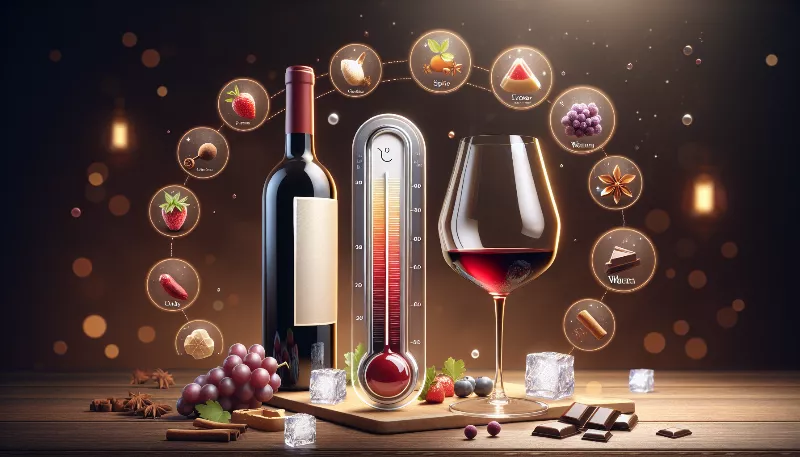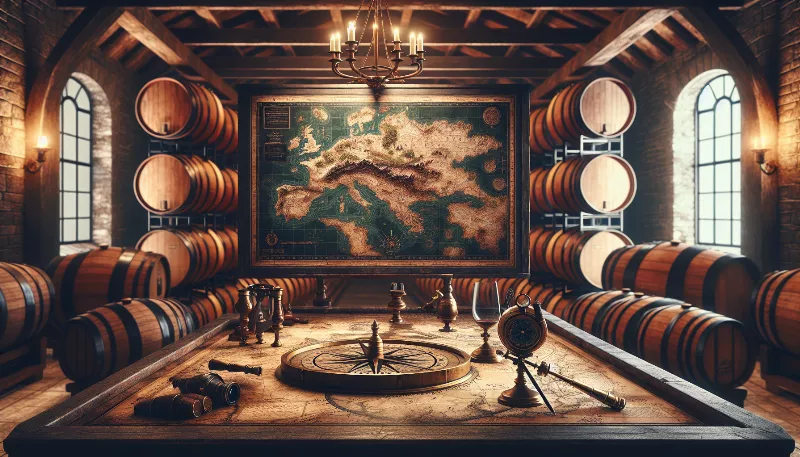How does serving temperature affect the flavor profile of red wine?
Discover the impact of serving temps on red wine flavors. Learn the secrets to unlocking the perfect bouquet and taste with our expert guide.

Unlocking the Secrets of Red Wine: The Impact of Serving Temperature on Flavor
Are you ready to elevate your red wine experience to a whole new level? It's time to dive into the fascinating world of wine temperature and its profound impact on flavor profiles! Serving temperature is not just a minor detail; it's a critical element that can make or break your wine-tasting adventure. Let's embark on a journey to discover how the warmth of your red wine can unlock a symphony of flavors, aromas, and textures that will tantalize your taste buds.
The Warm Embrace of Red Wine: Finding the Sweet Spot
Red wine is like a complex character in a novel, with layers of personality waiting to be revealed. The serving temperature acts as the narrator, guiding us through the story of the wine's flavor profile. Too cold, and the wine's voice is muted, its nuances locked away. Too warm, and the plot becomes muddled, with overpowering notes dominating the narrative. The sweet spot for most red wines lies between 55°F and 65°F (13°C to 18°C), where each sip brings forth a balanced ensemble of fruit, tannins, and acidity.
The Chilling Effect: When Red Goes Cold
Imagine taking a bite of a luscious, ripe strawberry straight from the fridge. The chill masks its sweetness and mutes its vibrant flavor. Similarly, when red wine is served too cold, its rich tapestry of flavors is shrouded in an icy cloak. The fruitiness retreats, the acidity sharpens, and the tannins become more pronounced, leading to a less enjoyable experience. To avoid this chilling effect, allow your red wine to sit at room temperature for a bit before serving, or if refrigerated, take it out ahead of time to warm slightly.
The Heat of the Moment: Too Warm to Handle
On the flip side, serving red wine too warm is like stepping out into a sweltering summer day; the heat amplifies certain elements while overshadowing others. Alcohol becomes more volatile at higher temperatures, which can result in an overwhelming sensation that drowns out the wine's subtler notes. The structure may feel flabby, and the fruit flavors can seem overly jammy or cooked. To prevent this, avoid placing your wine near heat sources or in direct sunlight, and consider using a wine cooler to maintain the ideal temperature.
Temperature Tips for Tantalizing Tastes
To truly appreciate the artistry in your glass, here are some temperature tips to enhance your red wine experience:
- Light-bodied reds such as Pinot Noir or Beaujolais thrive slightly cooler, around 55°F (13°C), to highlight their delicate fruit and floral notes.
- Medium-bodied reds like Merlot or Chianti hit their stride at about 60°F (15°C), balancing fruit, tannins, and acidity.
- Full-bodied reds such as Cabernet Sauvignon or Syrah prefer a warmer embrace, closer to 65°F (18°C), to fully express their bold, complex character.
Remember, these are guidelines, not rules set in stone. Personal preference plays a significant role, so feel free to experiment within these ranges to find your perfect pour.
Conclusion: The Perfect Temperature for a Perfect Sip
In conclusion, serving temperature is a key player in the theater of red wine tasting. It shapes the performance of the wine's flavor profile, ensuring that every act—from the opening aroma to the final finish—is delivered to perfection. By paying attention to temperature, you're not just drinking wine; you're experiencing a masterpiece. So grab your favorite bottle, set the stage with the ideal temperature, and prepare for an unforgettable sensory performance that will leave you applauding for more!









